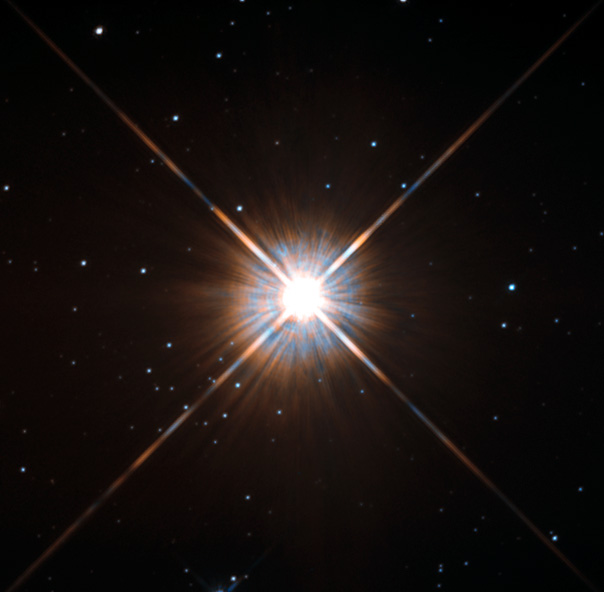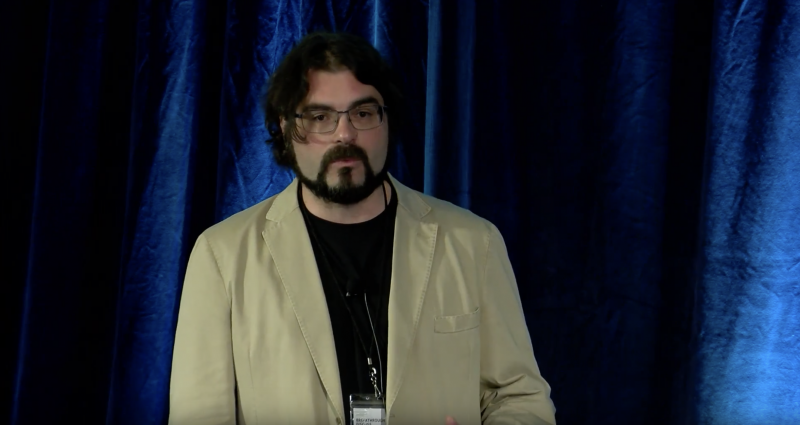
In 2016, astronomers announced the discovery of an exoplanet orbiting the closest star to our solar system, Proxima Centauri. Exciting, since the planet appeared to be close to the same size as Earth and not too far away, cosmically-speaking, at 4.2 light-years. Could there be other planets in this nearby system? On January 15, 2020, another research team published its evidence for a second, larger planet orbiting Proxima Centauri. At this point, this second object is still considered a candidate. It is not confirmed. But researchers do make a compelling case for its existence.
The potential discovery was announced by Mario Damasso of the National Institute of Astrophysics and his colleagues on January 15. The new peer-reviewed paper appeared in Science Advances on the same day.
The planet – dubbed Proxima Centauri c – is a fair bit larger than the first planet, Proxima Centauri b, and is about six times more massive than Earth. This would make it a super-Earth, planets that are significantly larger and more massive than Earth but smaller and less massive than Neptune. It is estimated to orbit its star every 5.2 years. Proxima Centauri b, by comparison, is only about 1.3 times Earth’s mass.
The 2020 lunar calendars are nearly sold out! Order yours before they’re gone. Makes a great gift!

Even though Proxima Centauri is the closest star, part of the Alpha Centauri three-star system, it has been difficult to detect planets orbiting it. That’s because most exoplanets discovered so far have been glimpsed via the transit method; that is, they’re detected because they lie edge-on to our line-of-sight to their host stars, and astronomers can detect a minute dip in the host star’s light when the planet crosses in front of it. No such dip in brightness has been seen for Proxima Centauri.
Instead, to find this star’s planets, astronomers have had to use a second planet-hunting technique, called the radial velocity method. Radial velocity refers to a slight wobble in the star’s motion as seen from Earth, caused by the gravity of unseen planets tugging on it. This is how Proxima Centauri b was found, and now, seemingly, Proxima Centauri c.
Two European Southern Observatory (ESO) telescope instruments, the High Accuracy Radial velocity Planet Searcher (HARPS) and the Ultraviolet and Visual Echelle Spectrograph (UVES), were used to obtain the data from Proxima Centauri.
Damasso and his team analyzed the star’s light spectrum data, going back 17.5 years, to see if a previously reported light spectrum signal really was from a second planet. If the spectrum oscillates between the red and blue radial velocity, that typically means the star is moving slightly closer to and then farther away from Earth, due to the gravitational pull of a planet or planets. The researchers did find such a signal, occurring over a 1,900-day period. That would mean it is unlikely to be due only to other cyclical shifts in the star’s magnetic field. It would be more consistent with a second planet orbiting the star.

So, could either of these planets be habitable?
At this point, we just don’t know enough about them to answer that question. Proxima Centauri b is almost the same size as Earth, and is thought to have similar temperatures, but it orbits very close to its star, which is a red dwarf. Red dwarfs are known for being very active, emitting powerful solar flares. The radiation from those flares could strip away the atmosphere of any close-in planets. Proxima Centauri c is farther out, but may be too cold for life as we know it. It also may be more like Neptune, with a deep gaseous atmosphere and no real solid surface, rather than a super-Earth, which is rocky like Earth, but larger. We just don’t know yet.
Another exciting aspect of Proxima Centauri c, however, is that it is far enough from the glare of its star that it should be able to be photographed directly by upcoming space telescopes. So far, only a handful of planets that are much larger than this have been successfully photographed, and even then, they are still just blobs of light.

From the paper:
Proxima c could become a prime target for follow-up and characterization with next-generation direct imaging instrumentation due to the large maximum angular separation of ~1 arc second from the parent star. The candidate planet represents a challenge for the models of super-Earth formation and evolution.
If scientists can learn more about both Proxima Centauri c and b, including direct imaging for at least c (b would be a lot more difficult), then that should give them a better idea of what both Earth-sized and super-Earth exoplanets are actually like, in particular ones that orbit red dwarf stars. That would then help them figure how many could be potentially habitable, and what conditions would make that possible, an exciting endeavor.
Bottom line: Researchers from the National Institute of Astrophysics have found new evidence for a second planet orbiting Proxima Centauri, the closest star to our sun.
Source: A low-mass planet candidate orbiting Proxima Centauri at a distance of 1.5 AU











